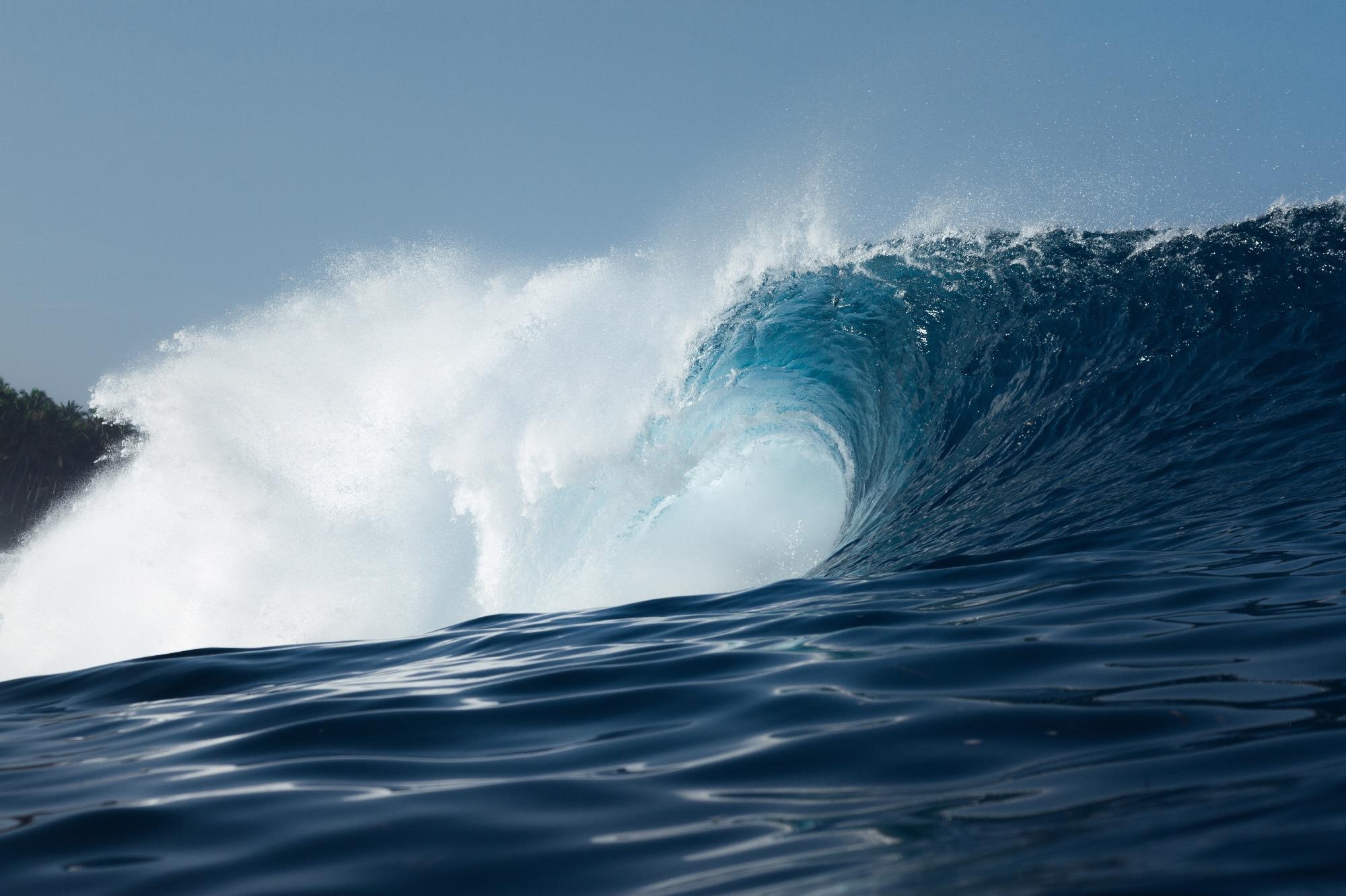At the UPV/EHU-University of the Basque Country, the EOLO research group verified and confirmed the rise in the power flow of the waves in the Bay of Biscay since 1900.

Image Credit: Shutterstock.com/ Cavan-Images
The researchers determined 10 types of sea states and linked them to the output of the Mutriku wave farm using a statistical model. Thus, they have calculated the amount of electrical power that could have been generated from 1979 to 2019 if these facilities had been functioning.
The Mutriku wave power plant has been built on a site of great energy potential, the Mutriku breakwater, operational from 2011. This wave power plant is the only wave farm in the world that supplies electricity to the grid continuously and has 14 oscillating water columns to transform wave energy.
Generally, technologies harnessing wave power to generate electricity are just emerging, and the UPV/EHU’s EOLO research group focuses on the same. The group also concentrates on climate, meteorology and environment, among many other aspects.
One thing is the energy the waves produce, the hydraulic energy they have, and another thing is the amount of electrical power obtained from them.
Gabriel Ibarra, Researcher and Lecturer, Department of Energy Engineering, University of the Basque Country
The researchers have been working on this for the past few years.
After identifying some of the key aspects of the operation of the Mutriku facilities a few years ago, we have now developed a methodology that allows us to find out the impact of climate change on the output at Mutriku. We have used it to reconstruct the daily electrical power that would have been generated if the Mutriku wave farm had been operational during the entire 1979–2019 period, and this will help us to predict what might happen in the future.
Gabriel Ibarra, Researcher and Lecturer, Department of Energy Engineering, University of the Basque Country
Ibarra added, “we have found that there has been a growing trend in the strength of the waves in the Bay of Biscay as a result of climate change, from 1900 to the present day. The aim was therefore to analyze how the Mutriku facilities responded to this trend. In this respect, while taking into account the evolution of the waves over the last four decades, we developed a methodology that allows us to determine how this increase may affect generation at Mutriku.”
Wave energy increases, but not electricity output
The researchers identified that “in the Mutriku area this upward trend in wave energy is not as high as in other areas of the Bay of Biscay, and that this trend would be dampened and electricity output would remain constant at the Mutriku facilities as a result of the way they function their regulation system.”
The energy flow levels off beyond a specific threshold and therefore is more stable than the wave energy flow. Thus, wave power installations including oscillating water columns are not directly affected by moderate long-term changes in wave energy. Ibarra remarked that to increase electricity production, much stronger waves would be needed.
The research identified 10 main types of sea states with which a distinctive pattern of electrical power generation was associated on a daily scale. This allowed reconstruction of the daily electrical power that would have been produced if the Mutriku wave farm had been functional during the entire 1979–2019 period.
The group also assessed the probable effect of the observed changes in the wave climate and the associated energy flow on electrical power output.
The next step is to consider the future that climate change will bring and make a forecast; we believe that this upward trend will continue and we want to see, firstly, whether this trend will be on a large or small scale, and secondly, what impact this will have in the future, over the coming decades, on output at Mutriku.
Gabriel Ibarra, Researcher and Lecturer, Department of Energy Engineering, University of the Basque Country
“All the research carried out at the Mutriku facilities is hugely useful in advancing this type of technology, as it is the only facility in the world that supplies energy continuously to the grid,” added Ibarra.
Thus, the study reveals that highly reliable feasibility and economic studies of wave power facilities can be conducted as the electrical power performance of the installations, throughout their life cycles, would not be affected much by the future uncertainties of the resource.
Journal Reference:
Ibarra-Berastegi, G., et al. (2021) The power flow and the wave energy flux at an operational wave farm: Findings from Mutriku, Bay of Biscay. Ocean Engineering. doi.org/10.1016/j.oceaneng.2021.108654.